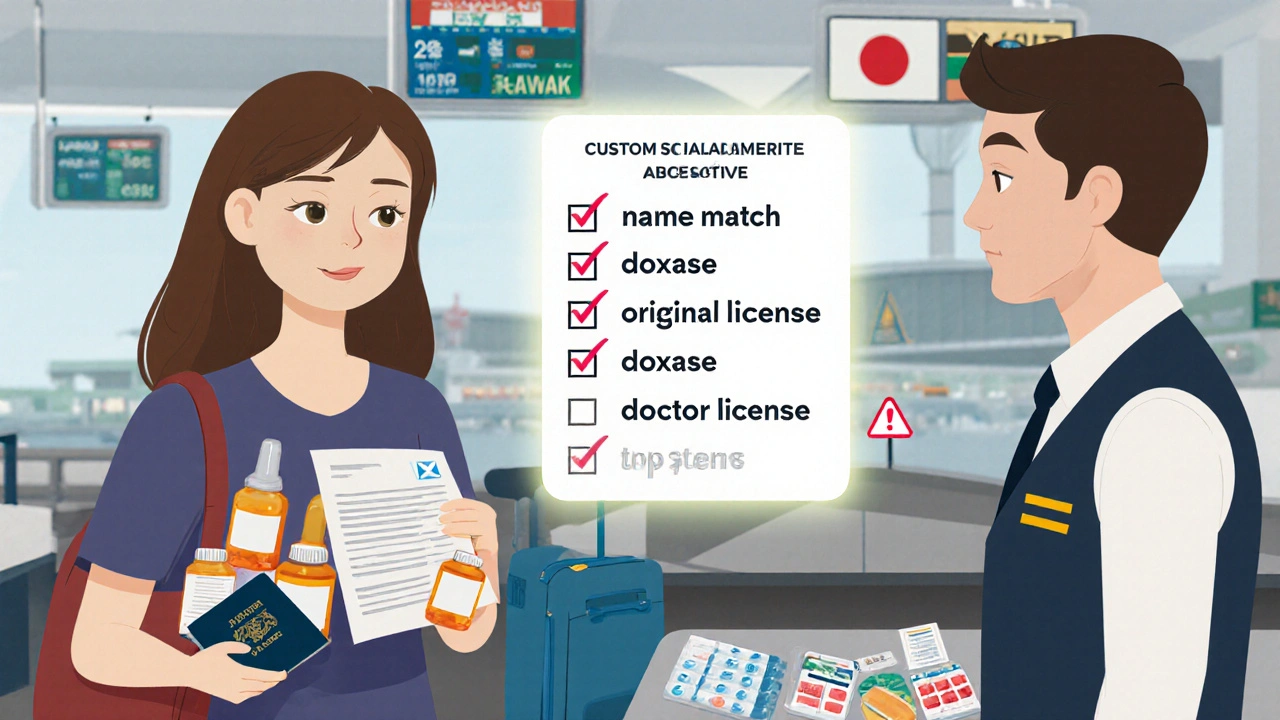Controlled Medications Travel: What You Need to Know Before You Go
When you're traveling with controlled medications, prescription drugs regulated by government agencies due to abuse potential, such as opioids, stimulants, or benzodiazepines. Also known as scheduled drugs, these require special handling when crossing borders or passing through airport security. It’s not just about packing your pills—you’re dealing with laws that vary by country, state, and even airline. One wrong move could mean confiscated medicine, fines, or worse. You wouldn’t risk flying with illegal drugs, so why treat your legally prescribed ones any differently?
Many people don’t realize that a drug legal in the U.S. might be banned in Canada, the U.K., or Japan. For example, Adderall (amphetamine) is a controlled substance in the U.S. but classified as illegal in some countries, even with a prescription. Same goes for Xanax, oxycodone, or even certain sleep aids. The TSA, Transportation Security Administration, the U.S. agency responsible for screening passengers and luggage at airports doesn’t stop you from carrying controlled meds—but they can refer you to law enforcement if your paperwork doesn’t match what’s in your bag. And abroad? Customs officers don’t care about your doctor’s note unless it’s in their language and follows their format.
You’ll need more than just your prescription bottle. Always carry the original container with the pharmacy label, a copy of your prescription, and a letter from your doctor explaining why you need it. The letter should include your name, the drug name, dosage, medical condition, and the doctor’s contact info. If you’re flying internationally, check the destination country’s drug laws on their embassy website. Some require advance permission—like Australia’s Therapeutic Goods Administration or the U.K.’s Home Office. Others, like Dubai, ban even common painkillers like codeine without special authorization. Don’t assume your U.S. prescription works everywhere. It doesn’t.
What about carrying meds in your carry-on? Always do it. Never pack controlled substances in checked luggage. If your bag gets lost, you’re stranded without your medicine. Also, keep them in their original packaging. Pill organizers? Only if you also have the original bottles with you. Airport scanners can’t tell what’s in a pill cup, but they can read a pharmacy label. And if you’re carrying a large quantity—say, a 90-day supply—you might get asked why. Be ready to explain it’s for an extended trip or refill delay.
When you’re traveling with international drug laws, the varying legal frameworks that govern which controlled substances are allowed, restricted, or banned across different countries, there’s no room for guesswork. A 2023 report from the International Narcotics Control Board found over 1,200 cases of travelers detained for carrying prescription drugs without proper documentation. Most weren’t trying to break the law—they just didn’t know the rules. You don’t have to be one of them.
Below, you’ll find real-world guides on how to handle specific medications while traveling, from painkillers to anxiety meds, and what to do if you’re stopped. These aren’t theoretical tips—they’re based on actual cases, official guidelines, and advice from pharmacists who’ve helped travelers get through customs without a hitch. Whether you’re flying across the country or heading overseas, this collection gives you the exact steps to stay safe, legal, and in control of your meds.

Travel Letters for Controlled Medications: Airport and Customs Tips
Learn how to travel safely with controlled medications. Get the exact documents you need, avoid customs seizures, and know which countries ban your prescriptions-so you don’t get detained at the airport.
October 28 2025